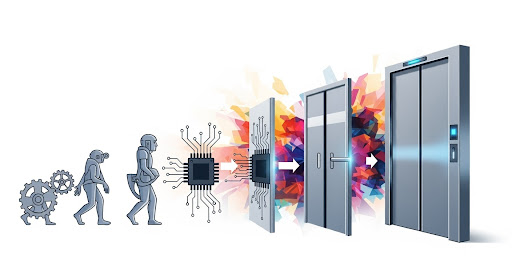INFORMATIVE NEWS:
From Science Fiction Dream To Reality in Door Automation
Automatic doors are so common today that we rarely stop to think about them. But behind those smooth-opening doors is an interesting story. It is a journey from science fiction to everyday things. These include the doors we use at shops, hospitals, airports, and offices. Join us as we explore the surprising history and future of the automation of doors.
The Early Visions of Automation
Long before automatic doors became a reality, they appeared in the imaginations of science fiction writers and filmmakers. Writers like Arthur C. Clarke imagined doors that opened with a wave of the hand. Films like 2001: A Space Odyssey showed smooth, automatic doors on spaceships. These ideas inspired engineers all over the world.
Interestingly, one of the first popular on-screen depictions of automatic doors came from the original Star Trek series. Crew members aboard the USS Enterprise walked through whooshing, self-opening doors – a simple but futuristic detail that became iconic. Behind the scenes, stagehands physically pulled the doors open in sync with the actors’ movements, yet the effect brought the concept of automated entrances into the mainstream imagination. We all remember that iconic swish of the Entrerprises doors opening.
These cinematic visions helped turn science fiction into science fact, inspiring real-world innovation
The first real efforts to create automatic doors started in the late 1800s and early 1900s. They used simple motors and air systems. However, early designs struggled with power limitations and unreliable mechanisms.
Everything changed with the arrival of reliable electricity in the early 20th century. Suddenly, there was a steady power supply to run motors and sensors. This made automatic doors possible in places like department stores and factories.
From Wartime Innovations to Commercial Success
During World War II, the military’s need for quick, secure access points led to accelerated development of automatic doors. Post-war, these innovations transitioned into commercial use.
The invention of the automatic door operator – a standardised mechanism adaptable to various door types – made automatic doors more affordable and versatile. In the 1950s and 1960s, shopping centres and large retailers embraced automatic doors as a symbol of modern convenience and progress.

Modern Advancements: Sensors, Safety & Accessibility
Today’s automatic doors are smarter, safer, and more accessible than ever before.
-
Advanced Sensors: From simple floor mats to infrared and motion-detection systems, sensor technology now allows doors to respond faster and more accurately to foot traffic.
-
Safety Features: Modern doors incorporate pinch protection, automatic reversal systems, and strict compliance with safety standards to protect users.
-
Accessibility: Wider doorways, push-button activators, and low-energy operators ensure that automatic doors enhance access for wheelchair users and people with limited mobility, supporting inclusivity.
Beyond Everyday Use: Special Applications & Future Trends
Automatic doors aren’t just for retail environments. They’re essential in:
-
Hospitals & Clean Rooms: Reducing contamination risks.
-
High-Security Facilities: Integrated with biometric access control.
-
Public Transport Hubs: Managing heavy foot traffic efficiently.
Looking ahead, doors are becoming even smarter. Expect to see innovations like:
-
Voice-activated doors
-
Facial recognition access
-
Integration with smart home and building management systems
Automatic doors also contribute to energy efficiency, reducing heat loss and supporting sustainable building design.
The Future of Automatic Doors
From futuristic dream to everyday convenience, automatic doors have transformed how we move through the world. And as sensor technology and automation continue to evolve, they’re set to become even more intuitive and sustainable.
Next time you walk through an automatic door, think about the incredible journey that led to that simple, seamless moment.
Recap In History
The first optical device for opening automatic doors wasn’t invented until 1931, when two US engineers developed a system installed at Wilcox’s Pier Restaurant in West Haven, Connecticut. Designed to help waiting staff carrying plates and glasses, the device allowed doors to open automatically without the need for manual operation.
Raymond and Roby’s device used a photoelectric cell to detect the interruption of a light beam, triggering the door’s opening mechanism.
Following the post-war economic boom, another pair of US engineers introduced the first weight-sensitive mat actuator. This triggered doors to open when someone stepped on the mat, leading to widespread adoption in the 1960s, particularly in hotels, shopping malls, banks, and office buildings.
By the 1970s, motion sensor technology began to replace mat actuators. These newer systems offered improved accessibility for disabled people and eliminated the need for physical contact to activate the doors – reducing wear on components and extending operational life.
In The Know
What You Can Do and What You Should Leave to Us
AUTOMATIC DOOR MAINTENANCE What You Can Do and What You Should Leave To UsAutomatic...
Are Roller Shutters Still the Best Security Option?
WHY CHOOSE ROLLER SHUTTER IN 2025 Are Roller Shutters Still the Best Security Option in...
Automatic Door Safety & Compliance Checklist 2025
Automatic Door Compliance Automatic Door Safety & Compliance Checklist for UK...



